Driving on the left hand side, unpredictable gravel roads and hellbent road users can be a particular challenge. Here are a few tips and guidelines to keep you and your passengers safe. We wish you a safe journey.
How to drive on Namibia's roads
A WORD OF ADVICE FOR SELF-DRIVERS TRAVELLING IN NAMIBIA AND BEYOND
Caution in traffic
At stop streets the general rule is: whoever arrives first, drives first. If in doubt, right before left. But pay attention at stop streets and traffic lights that are turning green – always make sure that other approaching cars are actually slowing down or stopping. Unfortunately, many people simply drive through stop signs or red lights without braking.
Oncoming traffic
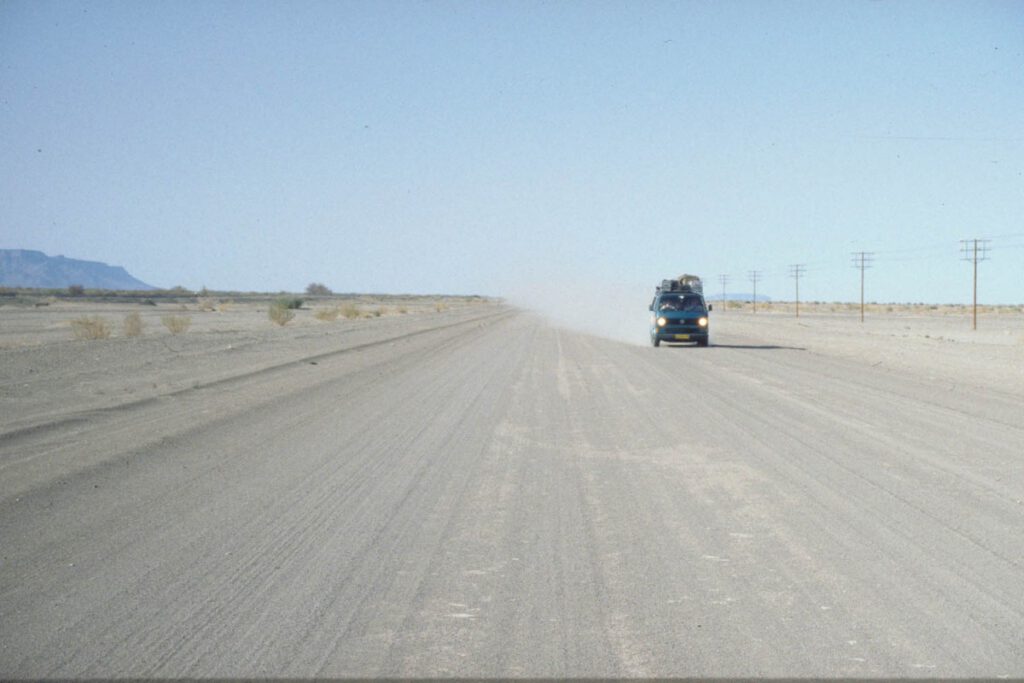
Whether you are on a tarred road or a gravel track, always be mindful of oncoming vehicles – especially on hill crests and in blind bends. Severe (fatal) head-on collisions occur time and again. On tarred roads these accidents happen mainly due to dangerous overtaking maneuvers. On gravel roads, there are numerous risks: the lane is often not as wide on top of a hill and is further narrowed by stone banks or bumps, leading to cars driving in the center of the road; foreigners fall into old habits and drive on the right hand side instead of on the left; the oncoming vehicle has entered a bend at too high a speed and is now threatening to take the bend too far and is skidding into your lane etc. etc. Be aware of other road users, especially oncoming traffic!
Switch your headlights on
In Namibia it is mandatory, by law, to have your headlights switched on when travelling between towns. Even during the day. You will learn to appreciate this once you have seen white cars disappear in dust clouds on light-coloured gravel roads during brought daylight or as silver cars vanish from sight in a mirage on a hot tar road.
Animals crossing
Be prepared for wild life crossing unexpectedly and of free-roaming livestock such as cows, goats, donkeys and horses next to the road. The risk of hitting an animal is one of the reasons why we at Kalahari Car Hire, like most car hires in Namibia and Botswana, urge you NOT to drive before sunrise or after sunset in-between towns. Wildlife is more active during the cool hours of the day, while herds of cattle often like to lie down on the warm tarred road or bush-free gravel road at night.
If you encounter an animal in the road, try to avoid the animal as much as possible, but do not swerve abruptly or jerk the steering wheel.
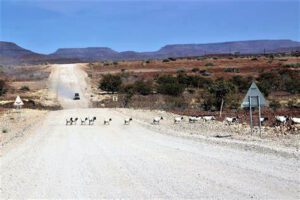
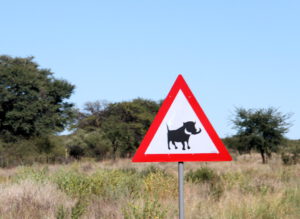
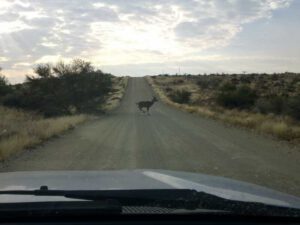
Conditions on gravel and sand roads
Travellers have accidents on Namibian roads time and again. Most of the time no other parties are involved. Most commonly drivers lose control of the vehicle and the car overturns.
Keep in mind: untarred roads are only roughly levelled by a road grader every couple of months or so. Weather and road usage seriously degrade the condition of the road. Also, some gravel roads are so heavily filled up that you drive as if on a kind of rampart or mound from which you threaten to slide down if you drive too far to the left. Furthermore, due to the strong sunlight and light-coloured sand and lack of shadows or contours, changes in road surface such as potholes, gullies, stones and other obstacles often come into sight far too late. Also be prepared for unwanted objects such as wire, car parts, glass bottles and other obstacles inside the lanes or on the road. Try to avoid driving over or onto foreign objects, but be careful not to swerve too agressively, since the loose road surface can be rather unforgiving.
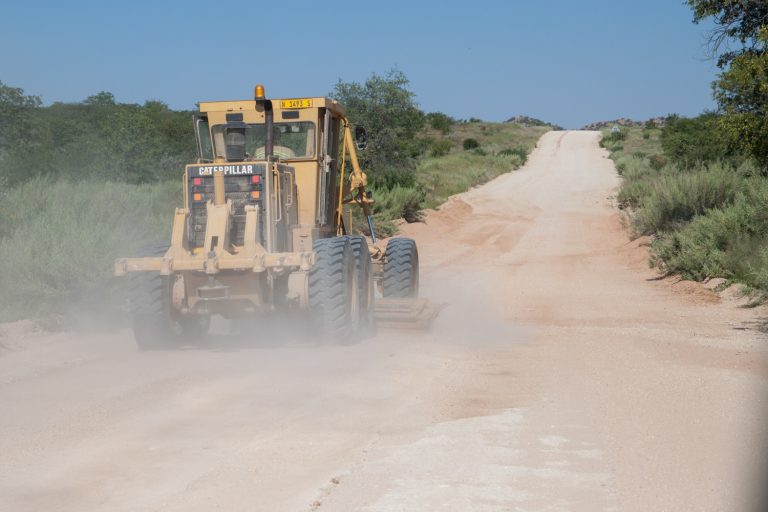
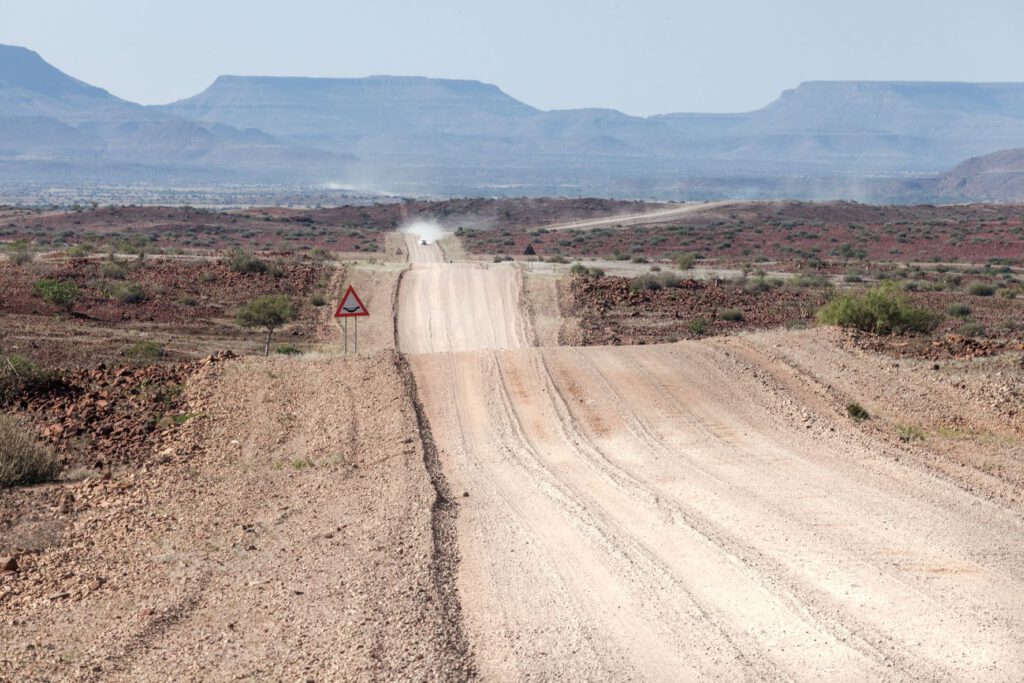
Due to the loose debris a vehicle has less grip on a gravel road than on a solid tarred road. The loose surface makes it easier for the vehicle to skid or slide, even at low speeds. For your safety Kalahari Car Hire (as well as all other car hires in Namibia) have a strict speed limit of 80kmh on gravel roads. Regardless of the official speed limit on a stretch of road. Do not drive faster than 80kmh on a gravel or sand road. Apart from endangering yourself and others, you have NO INSURANCE COVER in the event of an accident due to speeding on a gravel road, since that is deemed as gross negligence.
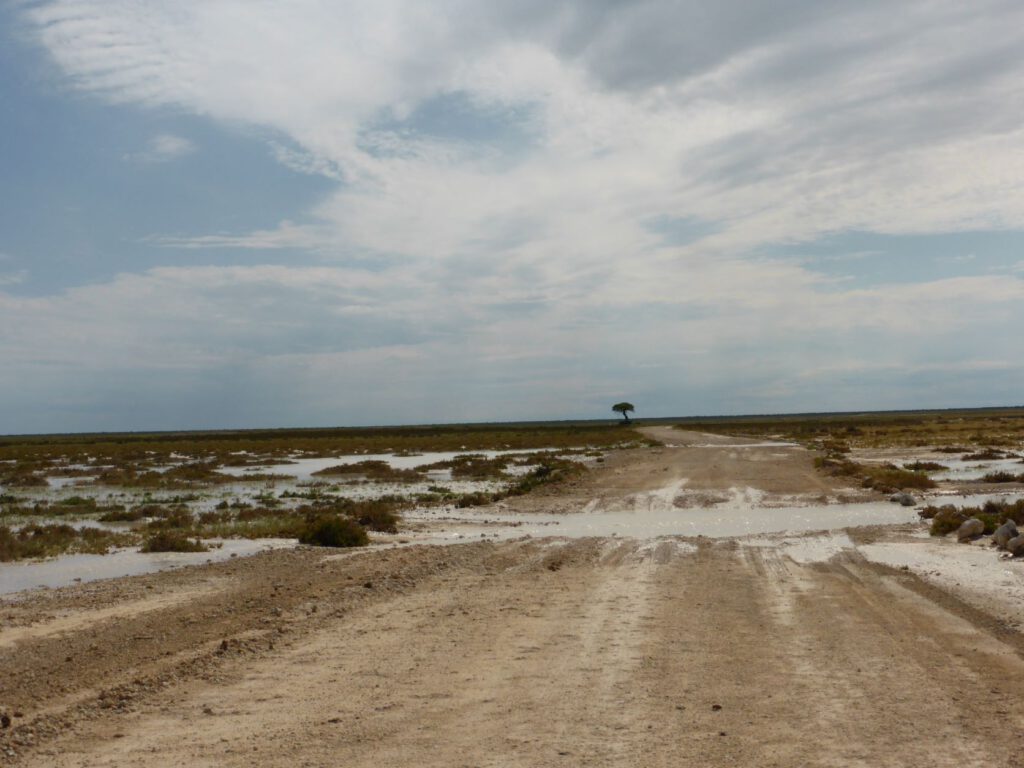
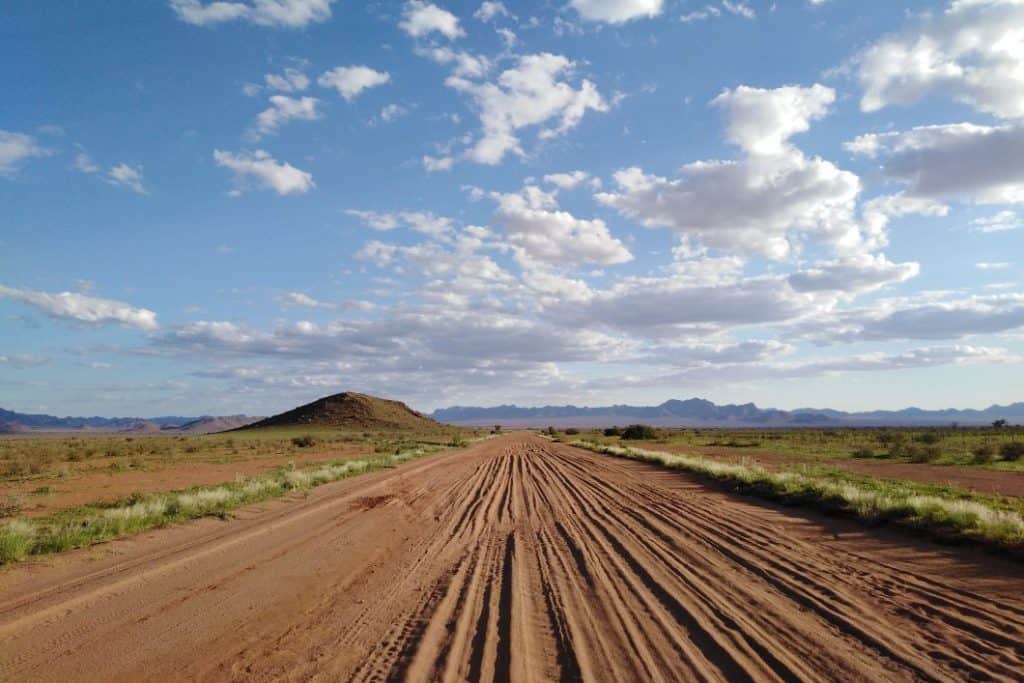
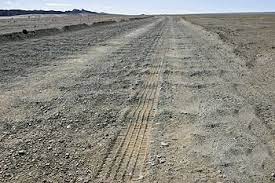
The famous “corrugated iron” on a gravel track not only shakes up the cars contents and will have your bones rattling, but can at times be so severe that the car feels like it is hopping sideways off the road. Drive carefully and try not to loose your patience. These bits of roads can be nerve-recking. Just hold onto your cooldrinks, turn up your favourite tune and it will be over in no time. If you are a seasoned driver with lots of experience on gravel roads, you can try accelerating a bit, as this tends to make for a smoother ride as you glide over the bumps rather than fall into each ditch over and over again. But don’t get carried away..literally! Be particularly careful before bends or on roads that are built up high. Rather slow down than cutting your trip short by ending up upside down. It’s not worth it. Believe me.
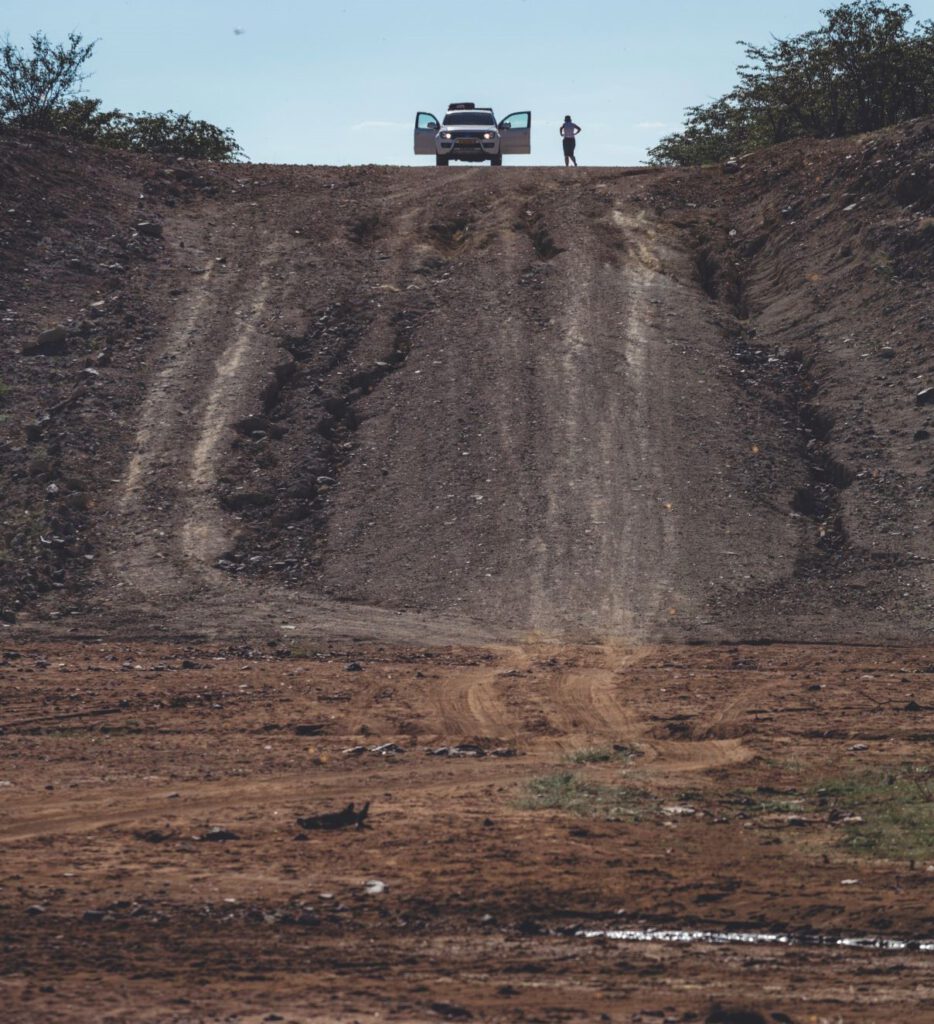
A little anxious? Good! But please do not let the above keep you from a self-drive holiday in Namibia! We have deliberately peppered you with somewhat gloomy facts, simply to drive home the responsibility you have. Because all single-vehicle accidents we have seen or heard of in the car hire industry in the past were absolutely avoidable and entirely due to reckless driving. Namibia has endless untarred roads that will lead you through the most breathtaking landscapes and to marvelous destinations. Just take it easy and you will be absolutely fine.
Flying stones
On gravel roads and sandy tracks, special attention must also be paid to stones being hurtled your way by passing cars. Particularly trucks or cars with trailers swirl up a lot of stones. Keep to the left and REDUCE YOUR SPEED to minimise the risk of a damaged windshield or shattered side window. Be prepared for any stones that may be thrown your way by oncoming or overtaking cars. Don’t let a stone chip shock you into swerving – keep the steering wheel straight.
Dust
Cars can kick up a huge cloud of dust, especially so on sandy roads. Depending on the wind direction, this dust cloud can stay over the road for a while. Should you get into such a dust cloud due to oncoming or overtaking cars impairing the visibility, REDUCE YOUR SPEED to get out of the dust cloud, make sure your headlights are turned on and be wary of oncoming traffic or cars driving in front of you.
Driving in a convoy
When driving in a group of vehicles, the primary rule is: keep your distance. The dust from the car in front of you inhibits your visibility and also gets into the ventilation system and interior of the vehicle. You should be able to see oncoming traffic well and cars from behind should be able to overtake you easily.
Afraid of being left behind or missing a turn? Don’t panic. Talk to each other beforehand. Tip: the car in front always waits for the car behind. If vehicle 1 turns off, it waits for vehicle 2 at the turn. If vehicle 2 arrives, vehicle 1 continues and vehicle 2 waits until vehicle 3 arrives at the turn and so on. Unless you want to take a break for a drink and/or a pee, then of course a pit-stop for the whole group is in order 😉
Tyre pressure
All tyres are pumped to 2.0 bar. This is a good average for driving on tar roads and gravel roads. If you are travelling on a standard route through Namibia, you do not have to change anything about the tyre pressure.
Deflating
When driving on particularly bumpy gravel roads, one can deflate the tyres to roughly 1.6-1.8 bar to increase “shock absorption” of the tyres and make for a smoother ride. But:
- be careful of the stones. Many gravel roads have sharp stones that are more likely to slice through tyre side walls when the tyre has a big “belly”. And if you hit a stone bank with tyres that are too deflated, the stone might punch through straight into the rim and hit a hole into the tyre.
When driving through very thick sand and you feel like the vehicle is really struggling even though you are in H4 four-wheel drive, try deflating the tyres to roughly 1.6-1.7 to give them a bit more of a “belly” and bigger surface to ride on. This way they tend to cruise more ontop of the sand than dig deep into the sand. But:
- the 3-ply tyres on our 4×4 vehicles make for the side walls being extra durable and less prone to stone cuts, but also less flexible. Should you drive these kind of 3-ply tyres too flat for your load, the side walls will break.
NB: Rember to inflate your tyres again to 2.0 bar BEFORE driving at faster speeds again on gravel or tar roads. Deflated tyres have more contact surface with the road, leading to more friction which in turn can lead to burst tyres or what we like to call “spaghetti”.
Do not overinflate
Unless you are carrying an unusual heavy load, never inflate tyres above 2.0 bar. If you feel the need to, consult us first. A tyre that is inflated too much has a smaller contact area with the road and does not cushion that well. If the tyres are too hard and the speed is too high for the track conditions, the car may begin to skid and you could loose control of the vehicle – and worst case overturn.
Tyre-friendly driving
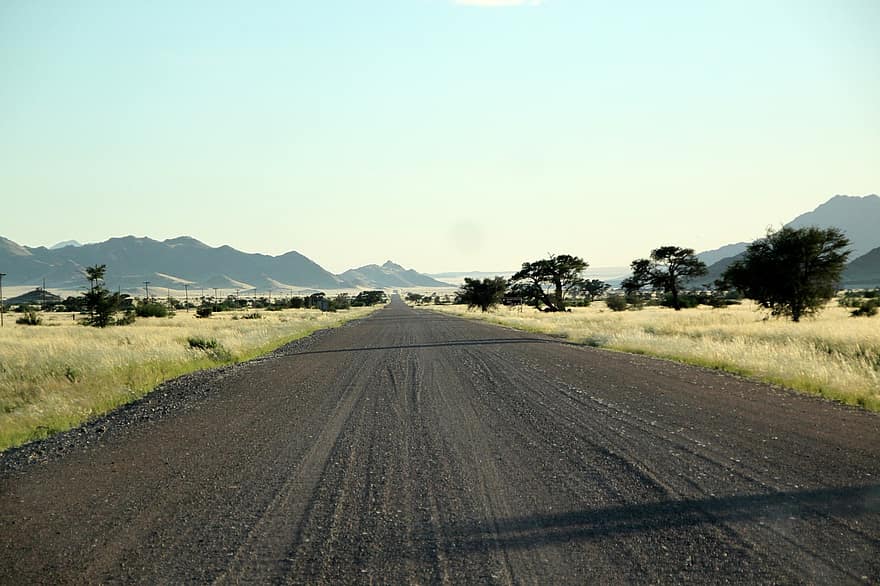
Many gravel roads develop spoors or tracks in them as cars tyres carve into the road and move stones and rubble to the left and right of their tracks. Apart from stones, other foreign objects such as wire, glass and the like also accumulate on the sides of these tracks. Where possible, stay in these tracks. Do not drive too far to the left or right into these accumulated stone and debris mounds, as this increase the risk of a punctured tyre considerably. If you usually drive on the right-hand side back home, be mindful not to overcompensate – do not drive too far to the left and in the debris. Very few of our clients have trouble with tyres getting damaged, but if they do, it is almost always the ones on the left hand side.
Driving in 4x4
Most importantly: switch into 4×4/all-wheel drive (L4) early/in time! Do not get stuck first! Getting stuck or more specifically trying to get out again puts a lot of strain on the clutch and undercarriage. Trying to get yourself unstuck can burn out the clutch in particular faster than you think. Damage to the clutch and undercarriage is excluded from insurance coverage!
As soon as you approach thicker sand, shift directly into Low4/L4.
Important: never drive faster than 40km/h in 4×4/all-wheel drive!
How to switch 4-wheel drive on ?
Most of our vehicles have a simple dial slightly to the left of the driver’s left knee for engaging/disengaging the all-wheel drive.
A few models have a second small gear lever to the left of the main gear lever.
1. Stop / the car must stand still
2. Press clutch and shift the main gear lever into neutral gear
3. Press clutch and shift from H2 to L4 / turn dial towards L4
4. Engage the first gear again and drive on slowly
If the L4 is switched on correctly, the 4Low/4×4 indicator sign lights up on the display. The car has noticeably more power and drives much slower in the normal gears. If the 4-wheel drive is not engaged correctly, the light flashes or remains off. In that case, try again.
How to switch 4-wheel drive off?
1. Stop / the car must stand still
2. Press clutch and shift main gear lever into neutral gear
3. Press clutch and shift from L4 to H2 / move dial anti clockwise towards H2
4. Engage first gear again and drive on slowly
If the 4-wheel drive is switched off correctly, the 4Low/4×4 sign will switch off and no longer be visible. If the all-wheel drive is not properly disengaged, the light will still be on or flashing. Reverse a few steps and see if sign switches off. Otherwise try again.
